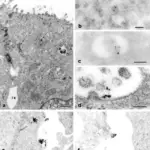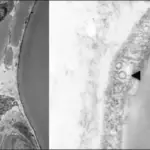Caveolae-mediated endocytosis is a clathrin-independent endocytic process which involves bulb-shaped, 50-60 nm plasma membrane invaginations called caveolae.
What is Caveolae-Mediated Endocytosis?

Passive Membrane Diffusion. Scheme illustrating possible routes of cellular uptake, including passive diffusion, receptor-related endocytosis, and clarthrin- or caveolae-dependent endocytosis. In brief, nanoparticles are in the correct size and shape. They may dock on membrane receptors, facilitating receptor-mediated endocytosis. Alternatively, clathrin- or caveolae-mediated endocytosis may occur, which results in the formation of pits in the region of 120 nm or up to 80 nm, respectively, which regulates the size of the material they are able to enclose.Current investigations into the genotoxicity of zinc oxide and silica nanoparticles in mammalian models in vitro and in vivo: carcinogenic/genotoxic potential, relevant mechanisms and biomarkers, artifacts, and limitations. Kwon JY, Koedrith P, Seo YR - International journal of nanomedicine (2014). Not Altered. CC.


